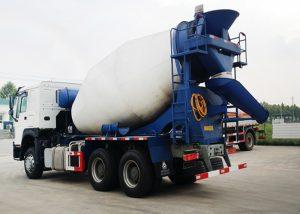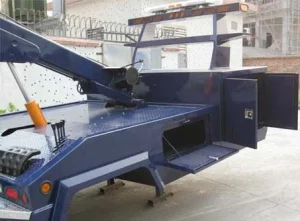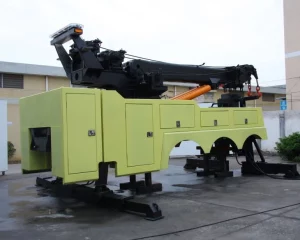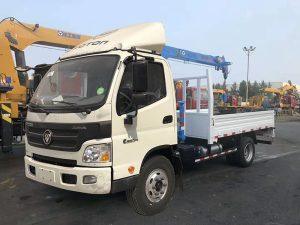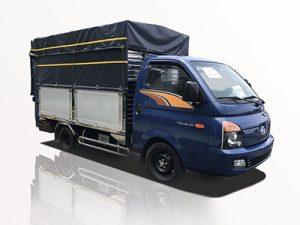Monday to Saturday - 8:00 -17:30
Pickup Truck Hooklift: The Ultimate Guide for Versatile Hauling
Introduction
Pickup trucks have long been known for their versatility in hauling goods, but the introduction of hooklift systems has taken this capability to new heights. A hooklift equipped pickup truck offers unprecedented flexibility, allowing operators to switch between different containers for a variety of transport and operational needs. This article delves deep into the world of pickup truck hooklifts, discussing their features, benefits, types, and practical applications.
What is a Pickup Truck Hooklift?
A pickup truck hooklift is a specialized mechanism that allows the truck to lift and transport different types of containers or bodies using a hook system. This innovation makes it easier for businesses, contractors, and individuals to switch loads quickly depending on their requirements. The hooklift can lift containers ranging from dump bodies and flatbeds to specialized boxes.
Benefits of Using a Hooklift System
1. Versatility
One of the primary reasons for investing in a hooklift is its versatility. Operators can easily switch between different containers without needing a separate vehicle for each type of load.
2. Increased Efficiency
The ability to load and unload containers quickly increases overall operational efficiency. Businesses can optimize their logistics and reduce downtime.
3. Cost-Effectiveness
Investing in a hooklift system can lead to substantial long-term savings. It reduces the need for multiple vehicles and allows for flexible transport solutions, minimizing transportation costs.
4. Enhanced Safety
When handled correctly, hooklifts can minimize the risk of injury associated with manual loading and unloading, contributing to safer workplace environments.
Common Types of Hooklifts
1. Standard Hooklifts
Standard hooklifts are designed for general hauling purposes. They are commonly used by contractors and in waste management.
2. Heavy-Duty Hooklifts
These systems are built to handle heavier loads, making them suitable for industrial applications and larger construction projects.
3. Light-Duty Hooklifts
Light-duty hooklifts are ideal for smaller pickups and are excellent for local deliveries and light cargo hauls.
How to Choose the Right Hooklift for Your Pickup Truck
1. Consider Your Hauling Needs
Identify what types of loads you plan to transport. Different hooklifts can accommodate varying capacities and container sizes.
2. Evaluate Your Truck’s Specifications
Ensure your pickup truck has the appropriate weight capacity and frame strength to support a hooklift system.
3. Research Quality and Brands
Look for reputable brands known for durability and reliability in hooklift systems. Reading reviews can also help in making a decision.
4. Check for Warranty and Support Services
Select a model that comes with a solid warranty and availability of customer support in case of maintenance or repairs.
Installation Process of Hooklift Systems
1. Preparing Your Truck
Before installation, ensure your pickup truck is cleaned and any necessary modifications are made. This may include reinforcing the chassis depending on the weight capacity needed.
2. Installation by Professionals
While some may opt for DIY installation, it is recommended to have the hooklift installed by a professional to ensure proper setup and safety.
3. Testing After Installation
Once installed, it is crucial to test the hooklift with a sample load to ensure everything is functioning correctly. Check for any potential issues that need addressing.
Practical Applications of Hooklifts
1. Waste Management
In the waste industry, hooklifts are invaluable for quickly switching containers for trash, recycling, and construction debris.
2. Landscaping and Lawn Care
Landscapers often utilize hooklifts to transport soil, mulch, and equipment between job sites efficiently.
3. Construction Services
Contractors use hooklifts to transport tools, machinery, and building materials without needing additional vehicles, enhancing operational efficiency.
4. Municipal Services
Local governments employ hooklifts for street maintenance, tree removal, and other public service tasks, adapting containers to fit the specific job requirements.
Maintenance Tips for Your Hooklift System
1. Regular Inspections
Conduct routine inspections of the hooklift system, checking for wear and tear on components.
2. Cleaning and Lubrication
Keep the hooklift clean and well-lubricated to ensure smooth operation. This reduces the risk of rust and mechanical failure.
3. Follow Manufacturer Guidelines
Adhere to the manufacturer’s maintenance schedule for optimal system longevity. This includes inspecting hydraulic lines and connections.
4. Train Operators
Ensure all drivers and operators are properly trained in using the hooklift system to minimize misuse and accidents.
Cost Considerations
1. Initial Investment
The cost of a hooklift system can vary greatly based on the brand, type, and capacity. Investing in high-quality systems may have a higher initial cost but can offer better reliability.
2. Ongoing Maintenance Costs
Factor in the costs associated with the maintenance of the hooklift and any repairs that might be necessary over time.
Frequently Asked Questions (FAQs)
1. How does a hooklift system work?
A hooklift system operates by using hydraulic mechanisms to lift and lower containers attached to a hook on the truck’s chassis. This allows for quick loading and unloading of various types of containers.
2. Can any pickup truck be fitted with a hooklift?
Not all pickup trucks can accommodate a hooklift. It is essential to ensure that the truck has the required specifications and frame strength to support the system.
3. What are the weight limits for hooklift systems?
Weight limits for hooklift systems vary depending on the model and truck specifications. Heavy-duty hooklifts can generally handle larger weights than standard or light-duty models.
4. How can I maximize the lifespan of my hooklift?
Regular maintenance, proper cleaning, and ensuring that operators are well-trained can significantly extend the lifespan of your hooklift system.
5. Are hooklift systems dangerous?
While hooklift systems can be safe when used correctly, improper use can lead to accidents. Proper training for operators is essential to avoid risks.
6. What types of containers can I use with a hooklift?
Hooklifts can be used with various containers, including dump bodies, flatbeds, waste containers, and specialized equipment boxes, depending on your needs.





